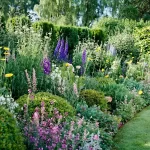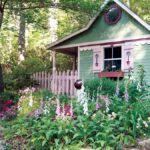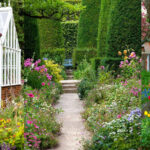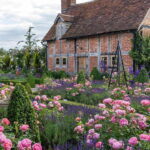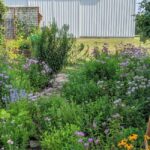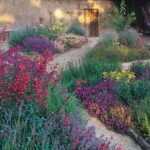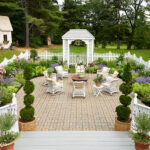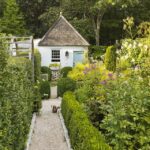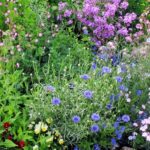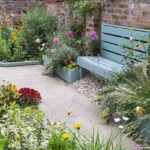Cottage gardens have a timeless and romantic appeal that has enchanted gardeners for centuries. These informal and charming gardens are typically packed with a riot of colors, textures, and scents, creating a cozy and welcoming atmosphere. The term “cottage garden” originates from the small plots of land that surrounded English cottages in the 18th and 19th centuries, where fruits, vegetables, and flowers were grown together in a harmonious and practical way.
One of the hallmarks of a cottage garden is its informal design. Unlike formal gardens with structured beds and geometric shapes, cottage gardens have a haphazard and natural look. Plants are often allowed to grow freely and intermingle, creating a lush and layered effect. This relaxed approach to gardening gives cottage gardens their unique and charming character.
Cottage gardens are known for their abundance of flowers, which bloom profusely throughout the growing season. Traditional cottage garden favorites include roses, peonies, foxgloves, and delphiniums, as well as a variety of annuals and perennials. These plants are often chosen for their romantic and nostalgic appeal, as well as their ability to attract pollinators such as bees and butterflies.
In addition to flowers, cottage gardens often include herbs, fruits, and vegetables. These functional elements add a practical and productive aspect to the garden, as well as providing fresh ingredients for cooking and preserving. Herbs such as lavender, sage, and thyme are commonly found in cottage gardens, along with fruits like strawberries and raspberries.
To enhance the rustic and romantic feel of a cottage garden, decorative elements like arbors, trellises, and picket fences are often incorporated. These structures not only add visual interest and height to the garden but also provide support for climbing plants like roses and clematis. Vintage or handmade garden ornaments, such as birdhouses, water features, and weathered planters, can also add a touch of whimsy and personality to a cottage garden.
Creating a cottage garden is a labor of love that requires patience, creativity, and a willingness to embrace imperfection. By selecting a mix of traditional cottage garden plants, incorporating both flowers and edibles, and adding decorative elements that reflect your personal style, you can create a charming and romantic retreat that will delight the senses and soothe the soul. Whether you have a small backyard or a sprawling landscape, a cottage garden can be adapted to fit your space and bring a touch of old-world charm to your modern life.

